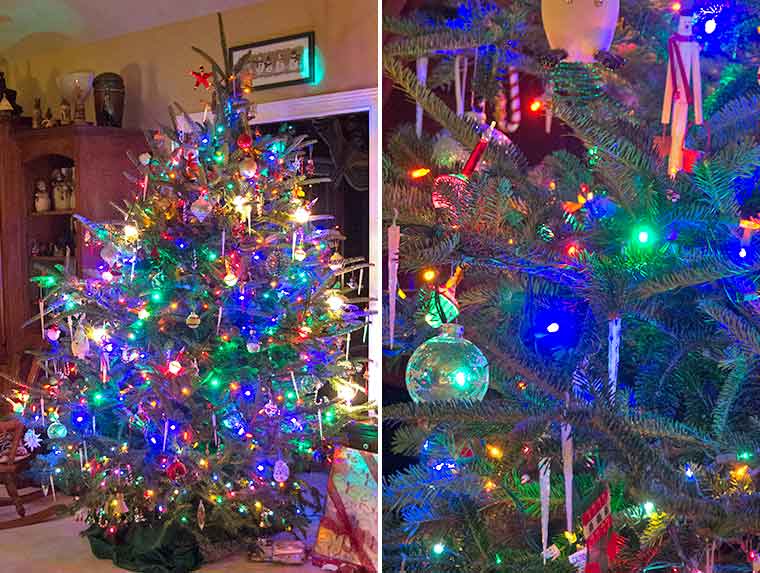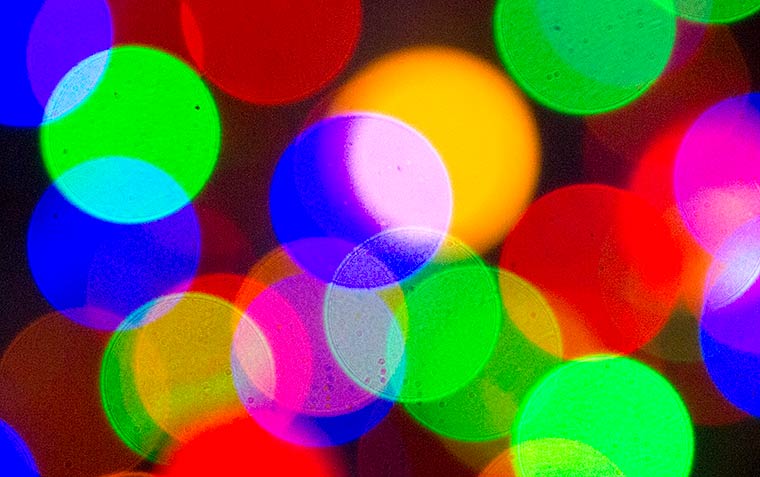This year we drove north into the foothills of the mountains to cut our own Christmas tree. There are lots of Christmas tree farms near our home on the Piedmont of Georgia. But we wanted to get a fresh Fraser Fir (Abies fraseri), and they do not grow well at lower elevations. Hence the trip to the mountains.
Fraser Firs are native to the southeastern Appalachian mountains of Virginia, North Carolina, and Tennessee, but they are now widely cultivated in the Northern U.S. and in Scotland and Ireland, mainly for use as Christmas trees. Fraser Firs have been used as the official White House Christmas Tree more times than any other species.
The photographs above show a general view of our tree and a closeup of a portion of the tree. We have small lights of various colors on the tree. Note the red, green, and blue lights adjacent to one another in the center of the photograph.
If you have recently watched any television or looked at any printed material pertaining to Christmas, you will have seen effects similar to the one in the next photograph. This is a picture of our tree in which I purposely defocused the camera. All detail of the tree is gone, and each light appears as a big circle of color.
The last photograph shows a portion of an out-of-focus image of a red, a green, and a blue light that are adjacent to one another on our tree (as in the first photograph above). Red, blue, and green are so-called primary colors. By combining these three colors in various combinations and intensities, virtually any other color visible to humans can be produced. This works because the cone cells of the human eye detect light with three pigments that have absorption maxima in the red, green, and blue areas of the electromagnetic spectrum. Your brain “manufactures” other colors by measuring the relative amount of light absorbed by the three pigments.
The lights on our tree cannot be said to be perfect sources of the three primary colors, but they are close enough to illustrate the point. In this image, yellow is produced where the red and green lights overlap. Purple is produced where the red and blue lights overlap, and cyan results from overlap of blue and green. If all three primary colors overlap, white results. The roughly triangular shape in the middle of the photograph shows this effect.
If you take a close look at a white area on your television or computer monitor screen, you will see small adjacent blocks of red, green, and blue. Thus your screen can only produce varying intensities of the three primary colors. Your brain decodes these variations in intensity and interprets them as a vast gamut of colors.
Discover more from A Naturalist's Journal
Subscribe to get the latest posts to your email.



